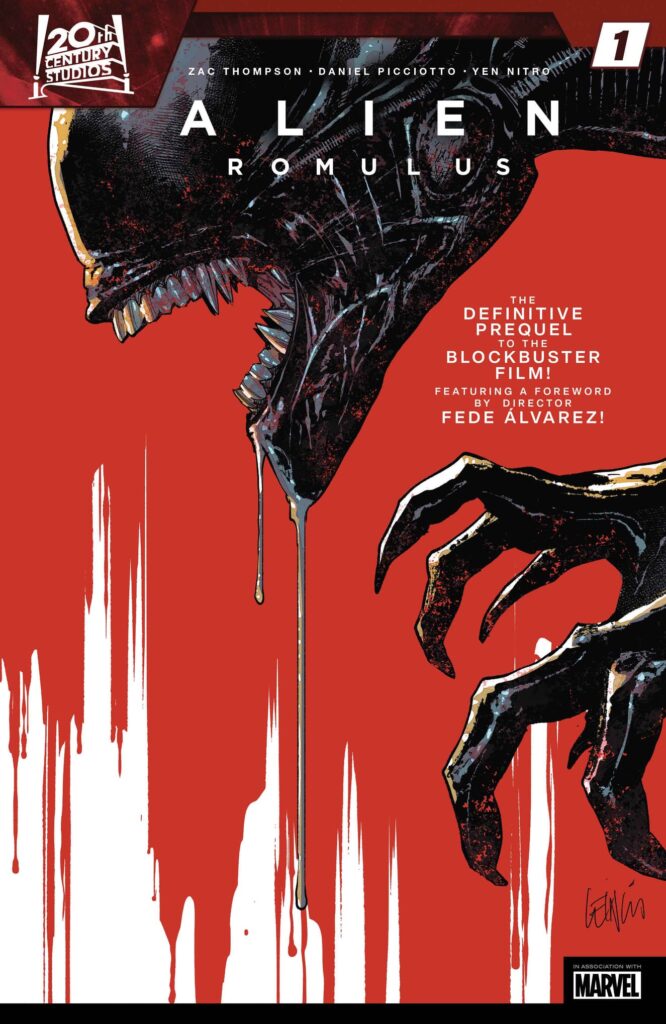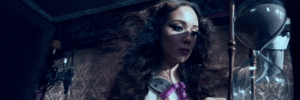The “Alien” franchise has long stood as a cultural icon in the world of science fiction and horror. Since the release of Ridley Scott’s groundbreaking “Alien” film in 1979, the franchise has captivated audiences with its unique blend of suspense, horror, and deep space intrigue. Over the decades, the universe of “Alien” has expanded into numerous sequels, prequels, and spin-offs, with each entry delving deeper into the lore surrounding its central antagonist—the terrifying Xenomorph. Marvel Comics’ new prelude comic, “Alien: Romulus” #1, scheduled for release on October 16, 2024, takes this legacy further, offering fans a new narrative experience that ties into the forthcoming film “Alien: Romulus”. With Zac Thompson as the writer and Daniel Picciotto as the artist, the comic serves as a prequel to the film and sheds light on one of the movie’s central mysteries.
The “Alien” Franchise: A Brief Overview
Before diving into “Alien: Romulus”, it’s essential to understand the rich history of the “Alien” franchise. The original film, directed by Ridley Scott, introduced the world to the Xenomorph, a monstrous extraterrestrial creature that would go on to become one of the most feared entities in science fiction cinema. The film’s success spawned several sequels, including “Aliens” (1986), directed by James Cameron, which took a more action-oriented approach while maintaining the horror elements that defined the original.
What sets the “Alien” franchise apart from other science fiction films is its exploration of existential horror—specifically, the fear of the unknown and the helplessness of humanity in the face of forces beyond its control. The Xenomorph, with its nearly indestructible form, acid blood, and parasitic reproductive cycle, represents the ultimate predator, a being designed purely for survival and destruction. This relentless, biological terror resonates deeply with audiences, tapping into primal fears of invasion, contamination, and bodily autonomy.
As the franchise expanded, it delved deeper into the origins of the Xenomorphs and the mysterious company, Weyland-Yutani, whose obsession with weaponizing these creatures often leads to the downfall of entire human colonies. Films like “Prometheus” (2012) and “Alien: Covenant” (2017) offered prequels that explored the creation of the Xenomorphs and their connection to an ancient race of beings known as the Engineers. While these films added layers to the “Alien” mythos, they also left many unanswered questions, creating fertile ground for additional narratives like “Alien: Romulus”.
Alien: Romulus and Its Place in the Franchise
The prelude comic “Alien: Romulus” #1 is an exciting addition to the “Alien” universe, offering a deeper understanding of the events that take place before the upcoming film. Set on the space station Renaissance, the comic provides crucial backstory to the film’s protagonists—Rain, Andy, and their crew—before they encounter the Xenomorphs. As a prequel, the comic aims to bridge the gap between the film’s story and the larger *Alien* lore, while also establishing the tone and stakes for the audience.
Zac Thompson’s involvement as the writer adds a layer of credibility to the project, given his background in horror and science fiction. Thompson has previously worked on comics like “Absolute Carnage: Avengers” and “I Breathed a Body”, both of which explore themes of body horror and the fragility of the human condition. His affinity for the “Alien” franchise, as he has publicly expressed, stems from a lifelong fascination with body horror, a theme that is deeply entrenched in the DNA of “Alien”. This focus on the visceral aspects of horror allows Thompson to craft a narrative that is not only frightening but also thought-provoking, as it examines the vulnerabilities of humanity when faced with an unstoppable force.
The comic’s primary focus is on the Renaissance space station, which acts as the setting for the impending catastrophe. According to promotional material, “Alien: Romulus” #1 will reveal a “tragedy” that occurs before the arrival of the main characters in the film. This backstory provides essential context for the terror that Rain, Andy, and their crew will face, as it explains how the Xenomorphs came to be on the station in the first place. Moreover, by framing the story around a tragedy, the comic adds an emotional weight that heightens the stakes for the characters and readers alike.
The Xenomorphs: Icons of Body Horror
One of the central themes of the “Alien” franchise, and by extension “Alien: Romulus” #1, is body horror. The Xenomorphs are the perfect embodiment of this subgenre, with their ability to implant embryos inside human hosts, which then burst forth in a grotesque and violent manner. This reproductive cycle plays on primal fears of invasion and bodily violation, themes that have been explored in various forms throughout the “Alien” films.
In “Alien: Romulus” #1, Zac Thompson and Daniel Picciotto aim to continue this tradition by focusing on the physical and psychological horrors that the Xenomorphs inflict on their victims. Thompson has expressed his enthusiasm for contributing to the “Alien” canon, citing his admiration for the franchise’s ability to create tension and suspense through the use of body horror. His writing in this comic is expected to delve into the terror of losing control over one’s body, a theme that has always been central to the “Alien” franchise.
The prelude comic’s exploration of body horror is likely to resonate with readers on a visceral level, as it taps into fears that are both universal and deeply personal. The idea of being transformed or consumed by an external force—whether it be a parasitic alien or a deadly virus—speaks to the fragility of human existence. In the context of the “Alien” universe, this horror is amplified by the Xenomorphs’ relentless pursuit of survival, which often comes at the expense of human lives.
Art and Atmosphere: Daniel Picciotto’s Contribution
Artist Daniel Picciotto’s work on “Alien: Romulus” #1 is a crucial component of the comic’s success. Known for his work on titles like “Danny Ketch: Ghost Rider” and “X-Force”, Picciotto is adept at creating dynamic, atmospheric visuals that draw readers into the world of the story. For a comic set in the “Alien” universe, atmosphere is everything. The sense of dread and foreboding that permeates the franchise must be reflected in the art, and Picciotto’s style seems well-suited to capturing this tone.
The prelude comic’s setting—the Renaissance space station—presents unique challenges for the artist. Space stations in the “Alien” franchise are often depicted as cold, sterile environments, which serve as a stark contrast to the biological horror of the Xenomorphs. Picciotto’s task is to create an environment that feels both claustrophobic and vast, evoking the isolation and helplessness that are central to the franchise’s horror. Early previews of the comic suggest that Picciotto has succeeded in this regard, with the unlettered pages showcasing dark corridors, eerie lighting, and the ever-present threat of the unknown.
In addition to the environment, Picciotto’s depiction of the Xenomorphs will be closely scrutinized by fans of the franchise. The design of the Xenomorphs, originally created by artist H.R. Giger, is one of the most iconic elements of the “Alien” films. The creatures’ biomechanical appearance, with its sleek, insect-like exoskeleton and elongated head, has become synonymous with the franchise’s brand of horror. In “Alien: Romulus” #1, Picciotto’s challenge will be to capture the essence of the Xenomorphs while also bringing his own artistic interpretation to the creatures. If successful, his work will add a new layer to the visual mythology of the “Alien” universe.
A Prelude with Purpose: Connecting the Comic and the Film
One of the key strengths of “Alien: Romulus” #1 is its role as a prelude to the “Alien: Romulus” film. Rather than functioning as a standalone story, the comic is designed to complement the film by providing additional context and backstory. This approach enhances the overall narrative experience for fans, as it allows them to immerse themselves more fully in the world of the film before its release.
In interviews, Thompson has emphasized the collaborative nature of the project, noting that he worked closely with director Fede Alvarez and screenwriter Rodo Sayagues to ensure that the comic aligns with the film’s vision. This level of coordination between the comic and film suggests that “Alien: Romulus” #1 is not merely an afterthought or a marketing ploy, but an integral part of the storytelling process. For fans of the “Alien” franchise, this level of attention to detail is likely to be appreciated, as it adds depth to the narrative and rewards those who engage with both the comic and the film.
Additionally, the comic’s exploration of the events leading up to the film’s main storyline provides an opportunity for Thompson and Picciotto to introduce new characters and plot elements that may not beinterrupted and lets you continue.
No comments yet.







